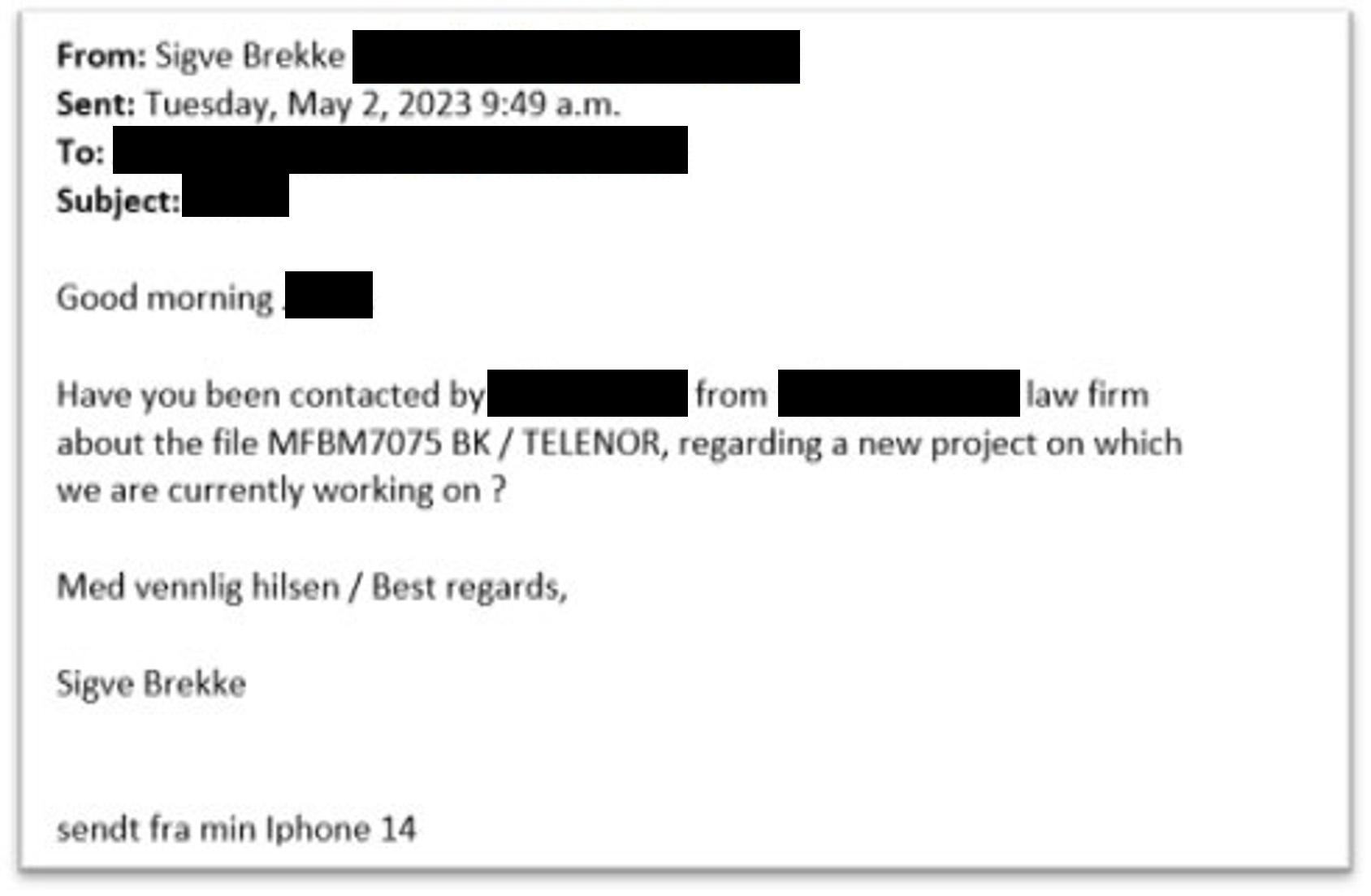
Foreign criminals wrote an email to a foreign company signed by Telenor CEO Sigve Brekke. – It was professionally impressive, without typos, says Brick, who went to the police.
- Telenor CEO Sigve Brekke has been subjected to a “spoofing attempt” in which criminals forged his email.
- The matter has been reported to the police.
- Brekke warns people to be careful and not to click on links or respond to inquiries from unknown senders.
- Telenor’s survey showed that 80 percent of respondents had experienced digital crime in the past 12 months.
Telenor’s boss recently had a impersonation attempt Where the criminals forged his email: So the criminals tried to pretend to be Sigve Brekke and sent an email in his name to a large company abroad.
– We received an inquiry from another international mobile firm that they had received an email from me, apparently asking if they had been contacted by a recognized international law firm and a named person at that firm, on a case we were working on, says Brekke for VG.
You can read the message here:

– We started investigations immediately and fortunately it turned out that they did not control my email account, but used, among other things, an IP server in the Netherlands to make the email appear as if it was from me.
Do you have contact with this law firm?
– Yes, most people in our industry use it, so the name of the law firm and the employee there was correct.
– Sounds like a thorough investigation of criminals?
– If the recipient has responded, they can go ahead and pretend to be the appointed attorney, either to obtain information or some other financial gain.
– It was absolutely perfect
– What was the reaction of the mobile phone company, which prompted them to notify them about this?
– There was nothing wrong with the email, no misspellings or anything like that, it was absolutely perfect, but at the moment we don’t have any project going on with this company, so maybe that’s what got them flopped:
– it was done in a relatively advanced way, although it was a relatively simple form of forgery.

He says they found out who is behind it.
– We found evidence of a major international criminal organization. We went to the police with our information and reported it. We went to the police because this kind of business is being done on a fairly large scale at the moment.
– We call this Manager scamManager scamDirector fraud is also called “CEO fraud”. This is primarily fraud carried out by people pretending to be in the management of the company, in an attempt to initiate financial transactions. The attack channel could be email (apparently external and internal), SMS, physical messages or phone calls, as well as structured channels such as billing and payment systems. Source: Norwegian Data Protection Authority.He says:
– Fraudsters use well-known names in well-known companies to initiate and legitimize the fraud. It often ends up with bosses asking subordinates to transfer money.

Brekke asks you to be on your guard.
You need to know what you can do to keep yourself safe. Artificial intelligence, for example, is both good and bad news. Criminals are now using artificial intelligence to design emails that are almost impossible to tell are fake.
He says they use it too Amnesty International to prevent such.
– Last year we closed 30 million fraud attempts by our clients in Norway. We are now examining how we can use AI to detect fraud and help prevent digital crime.
The simple advice is:
Never click on links or respond to inquiries via email or other digital platforms, if you are not sure who you are contacting.
Here are more tips from the CEO of Telenor:
He says they dealt with it internally.
– We have trained all 16,000 employees on what they should be aware of, in order to increase awareness. Much of what ends up in fraud is often caused by the employee not being vigilant enough.
Brekke says Telenor recently ran a survey, conducted by Norstat, that showed 80 percent said they had experienced digital crime in the past 12 months.
Here is another result from the survey:
- 56 percent say they see the need to protect themselves and their data from cybercrime.
- 41 percent do not use Two-factor authentication.
- Here is a breakdown of the type of digital information that the population is most afraid of losing control over (in percentage):
- Banking information – 90
- Identity theft – 84
- Private sensitive documents – 35
- Accounts on social media – 31
- Own photos – 30
Here are the types of digital fraud attempts people experienced in the last 12 months (in percentage):
- Phishing attempts: 62
- Fraudulent calls: 53
- Investment fraud: 35
- Fake websites/online stores: 31
– That is why we ask the Norwegian people to be more aware that there are many criminals trying to obtain information to defraud you, he says.

“Web specialist. Lifelong zombie maven. Coffee ninja. Hipster-friendly analyst.”



